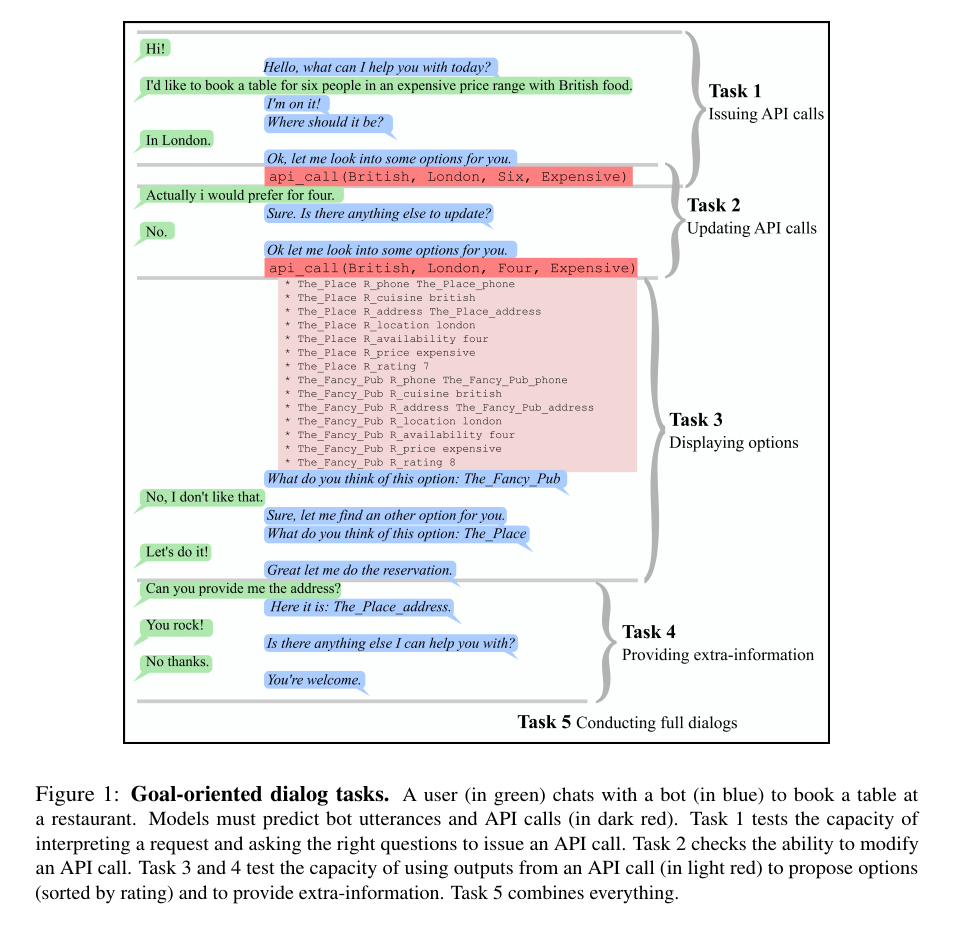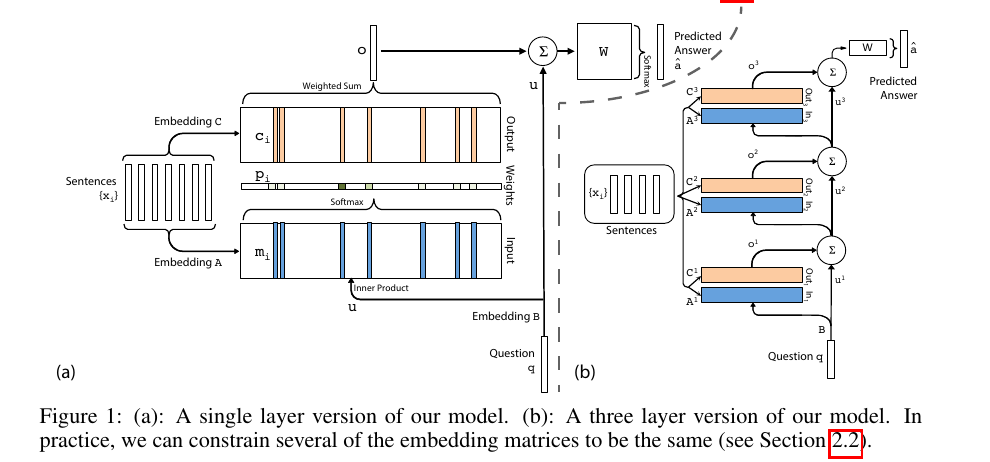

建议用电脑看
这篇论文主要是讲解了End-to-End 模型(基于Memory)在Goal-Oriented Dialog system的的优缺点。并用 restaurant reservation来进行说明。 提出(1)favors reproducibility and comparisons, and (2) is lightweight and easy to use的模型标准。在传统的每一小部分(具体如下图)都用上把bAbI tasks use that to gauge the strengths and weaknesses of current end-to-end systems with no domain knowledge.而不是改进模型。

也就是说:这个模型其实就是在验证Memory network 在dialogue systems 上也是有用的!

上图是Memory network 的一个架构图。在QA方面,这个结构是比较有用的,体现出了其不错的性质。

对话数据:文中所用数据并非全部为真实数据,有5个task都是simulated conversation. simulation的方法是,用43种pattern生成user utterance,用20种pattern生成bot utterance。(显然,和真实场景比还是太少了。。。)另一组真实task数据是从Dialog State Tracking Challenge的订餐数据中转过来的(并没有用数据中标注的dialog state)。 Database: 每个restaurant的property包括:{口味,地点,价格区间,桌子大小(int,不是list),地址,电话,打分}
由于之前或者现在的模型大多是分成小部分的,也就是说其模型数据也是基于之前的模型的,很少可以直接用于end to end 训练的。